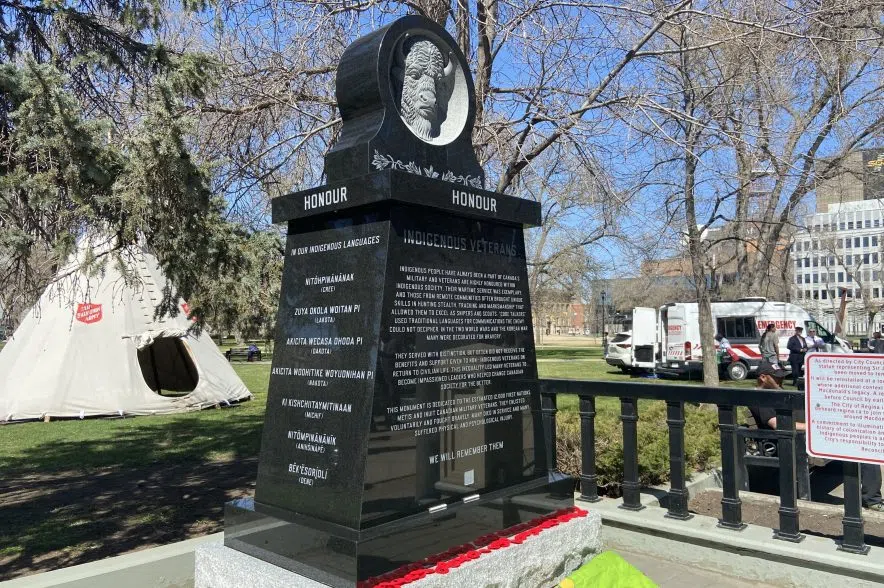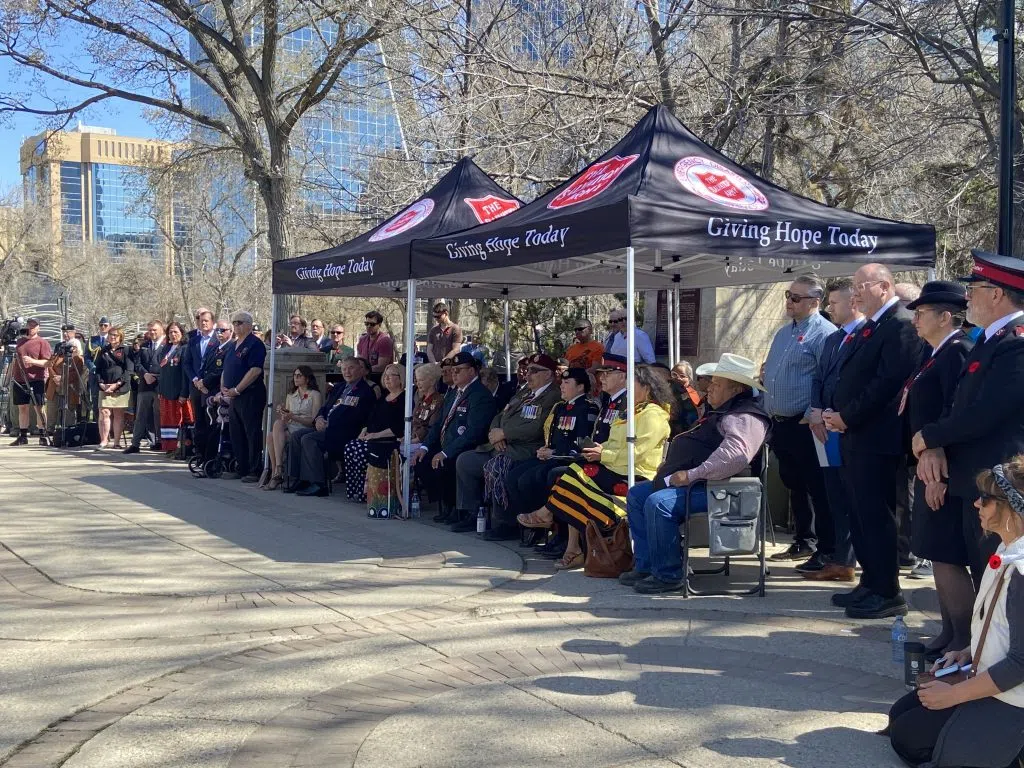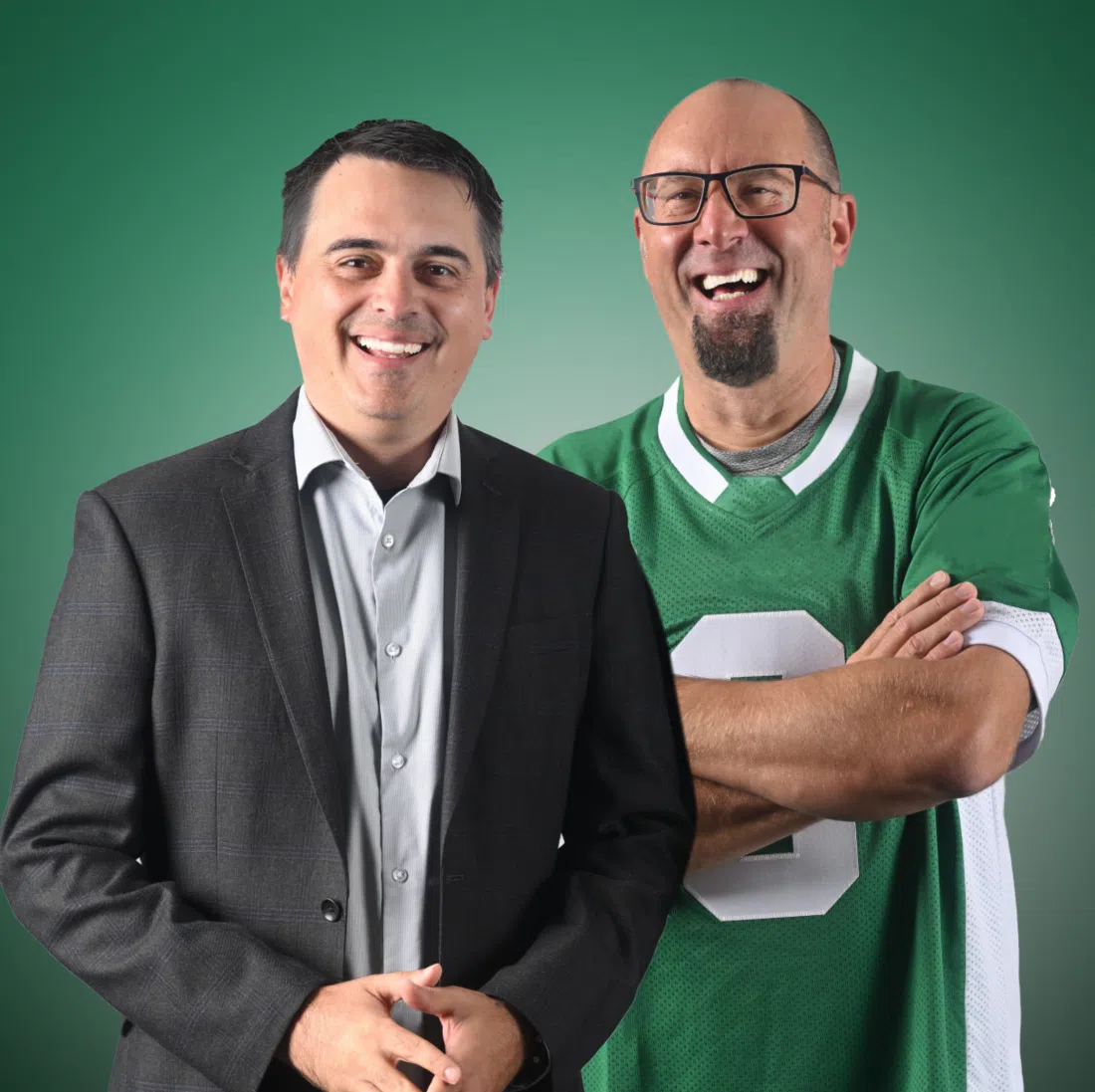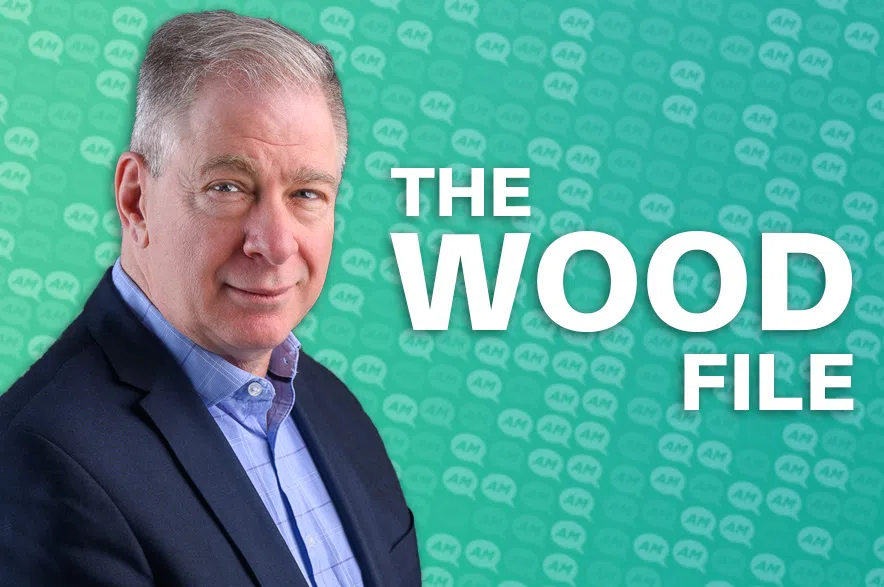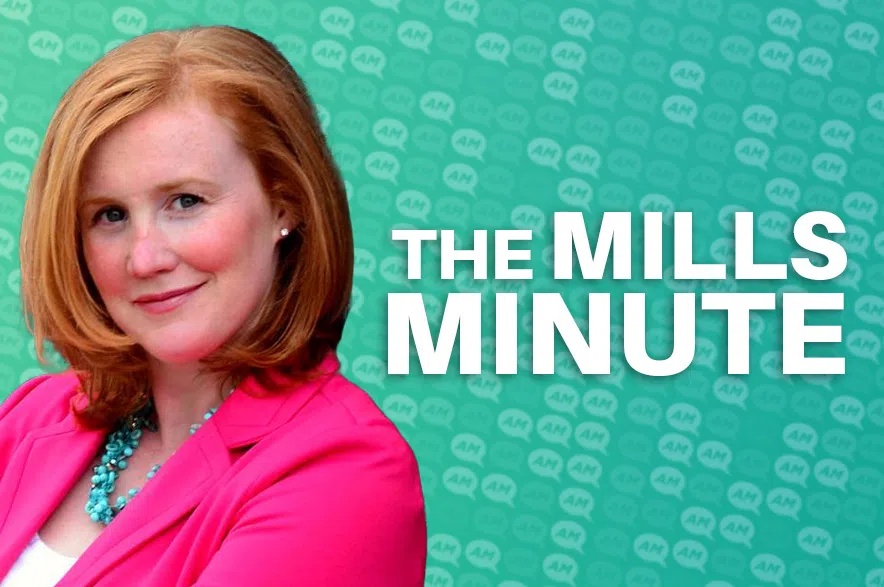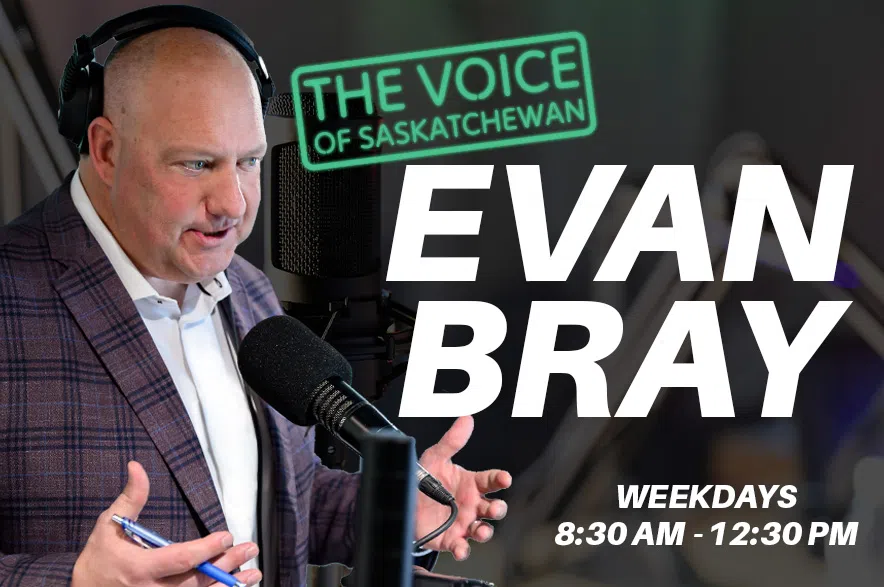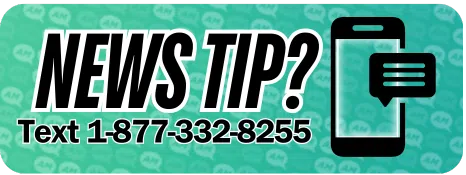A hot May sun made a new monument for Indigenous Veterans shine extra brightly in Regina.
The seven-foot monument was unveiled on May 3 in Victoria Park in the presence of Indigenous veterans and representatives from the military and government, as well as community members who wanted to attend the special event.
Read more:
- ‘We need a break’: James Smith Cree Nation Chief urges caution following destructive wildfire
- Canadian liberation of the Netherlands a fight Europe will never forget
- Red Dress Day offers opportunities for reflection and learning across Saskatchewan
The ceremony started with a smudge and, fittingly, an honour song.
The overall theme of the monument is honour. At the top of the monument is a buffalo head, an important symbol to Indigenous peoples.
The front of the display details the significance of the monument and the important role Indigenous people played in the Canadian military. The back features the same information in French.
The monument is dedicated to the estimated 12,000 First Nations, Métis and Inuit military veterans who all enlisted voluntarily.
The south-facing side of the monument features the word “honour” in all seven of Saskatchewan’s Indigenous languages.
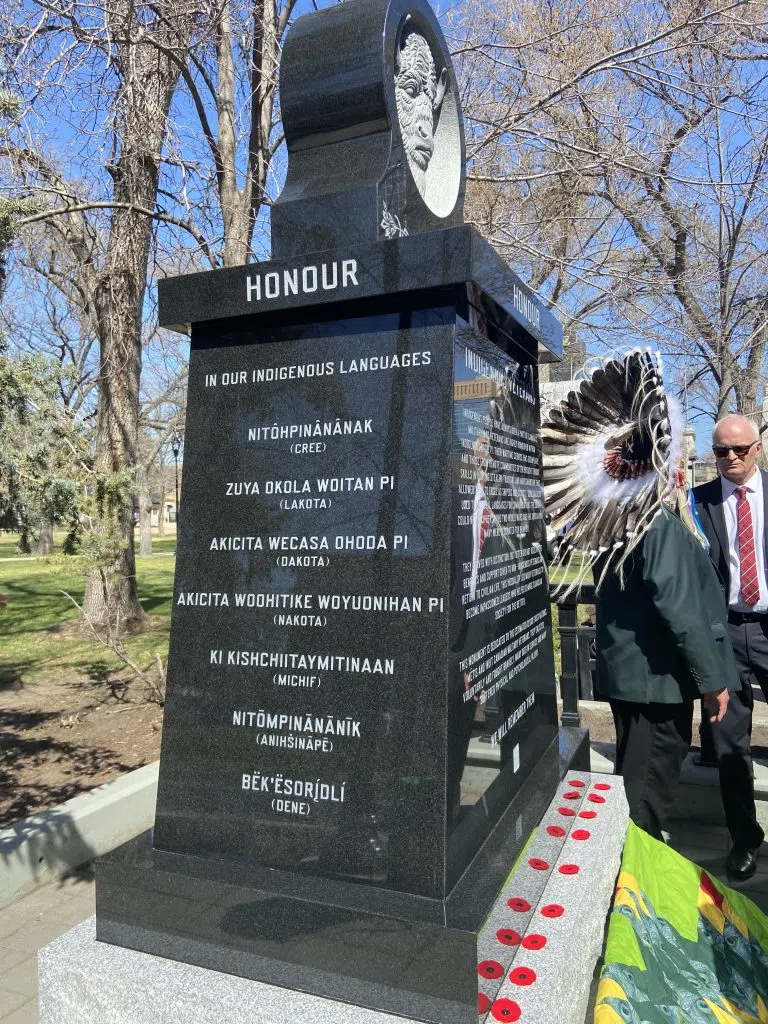
The seven Indigenous languages in Saskatchewan are Cree, Lakota, Dakota, Nakota, Michif, Anihšināpē and Dene. (Nicole Garn/980 CJME)
Craig McCallum, the fourth vice-chief of the Federation of Sovereign Indigenous Nations, said the monument represents a step towards reconciliation.
“I always remind people that we enjoy the life that we live because of their sacrifice. They were willing to pay the ultimate price,” he said.
“What a show of love for someone to be willing to give up their life for you, for your future. To witness this and to see the acknowledgement that our Indigenous veterans received today was really beautiful.”
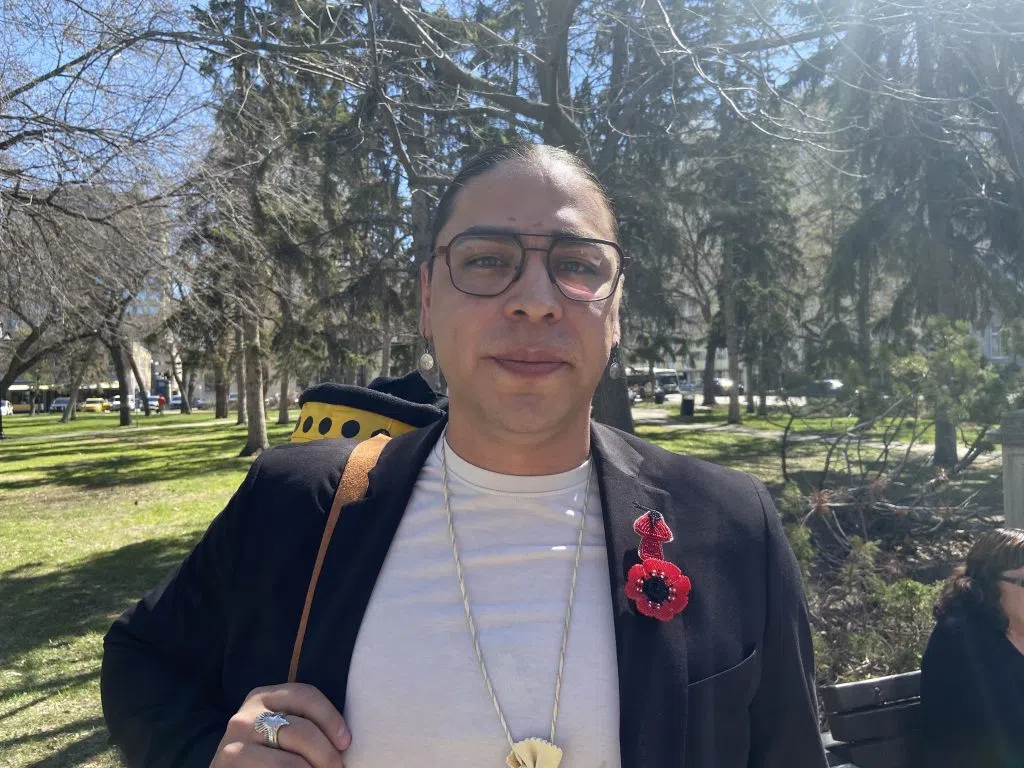
Craig McCallum holds the veterans portfolio with the FSIN. He said many veterans are struggling with the cost of living and navigating the Veterans Affairs Canada system. (Nicole Garn/980 CJME)
McCallum works closely with a lot of First Nation veterans. He said he always wondered why they chose to serve, as it wasn’t required under treaty, so he asked them about their reasons for enlisting.
“They loved this land. They loved our way of life. They loved our people, and they also loved our treaty relationship,” he said.
“They did it to honour our part of treaty. They did it because we’re treaty partners, and so for us to sit back and watch Canada go into war and not do anything, that’s not a partnership; that’s not a true relationship.”
He said people need to honour the treaties and honour what the veterans fought for.
“It’s important for the everyday Canadian, the non-Indigenous Canadian, to learn the history; to understand that our veterans didn’t have to go. Our veterans didn’t have to help and stand up, but they did,” McCallum said.
Acknowledgement is a great place to start, but McCallum said there’s always more than can be done.
Brad Hrycyna, chair of the Indigenous Veterans Monument Committee and president of the Royal United Services Institute of Regina, said the monument will go a long way towards that acknowledgment.
“Through this monument, we wanted to make sure that the citizens of Regina and Saskatchewan fully understand that the Indigenous veterans who fought in the wars, even though by treaty were not required to do so, fought with courage and skill and honour,” he explained.
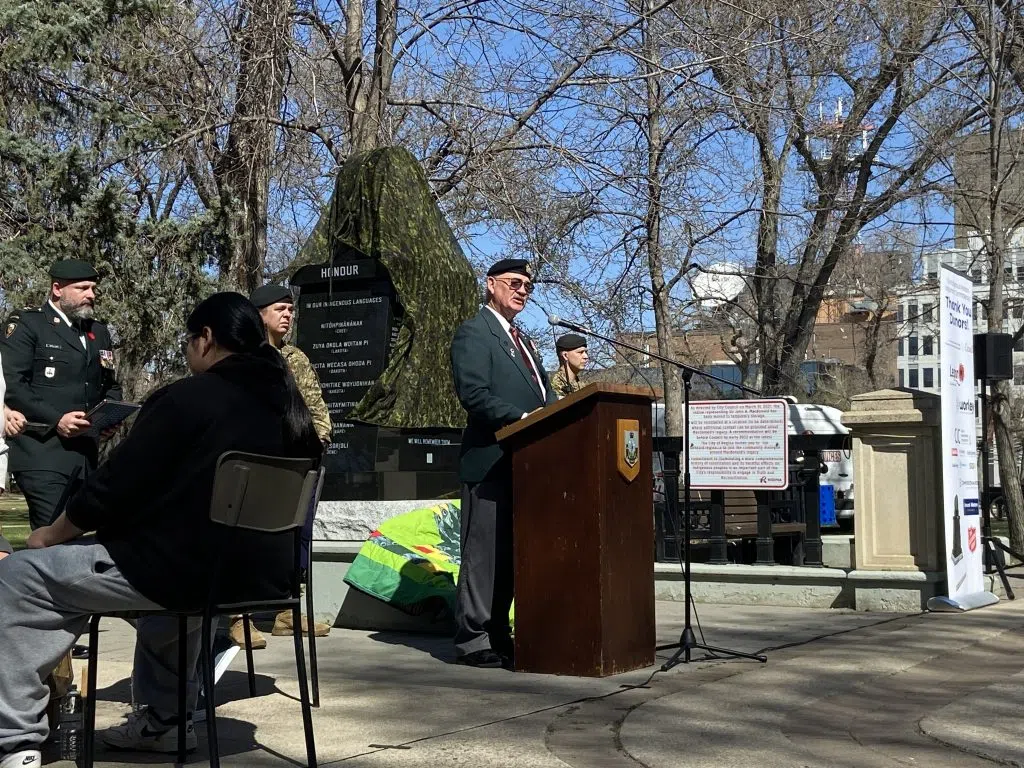
Brad Hrycyna spoke to the crowd that gathered about the importance of understanding the role Indigenous veterans played in the war. (Nicole Garn/980 CJME)
Hrycyna said it’s important to understand the role of the First Nation veterans who served Canada, as well as what happened to them once they returned.
“When they were released from the army, they were not given the grants such as education, land grants and other financial benefits that the non-Indigenous veterans were accorded,” he explained.
“This is a reminder to everybody who sees this monument that the Indigenous veterans were an important part of Canada’s war effort, and that they did serve with honour, and they should be respected for that.”
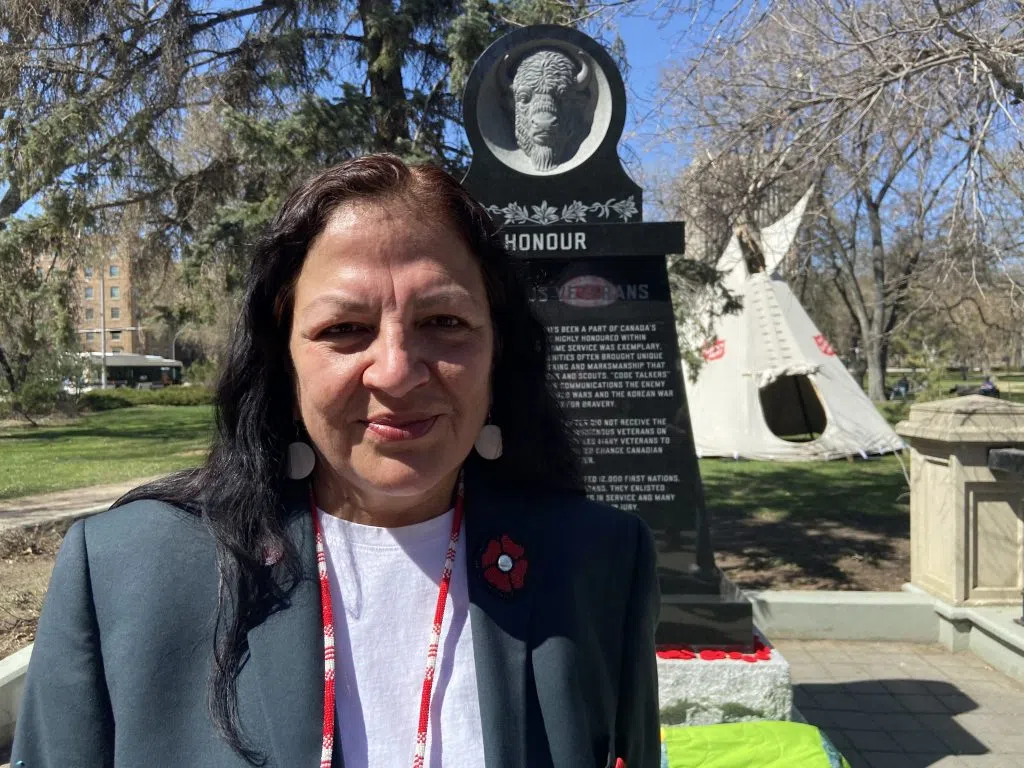
Tracy Desjarlais said it’s been an honour to be a part of the group that helped bring the monument to life. (Nicole Garn/980 CJME)
For Tracy Desjarlais, president of the Saskatchewan First Nation Veterans Association’s South Branch, the day was an emotional one.
“Historically, our First Nations veterans weren’t treated fairly, like the non-Indigenous veterans,” she said. “They’ve never been recognized here in Saskatchewan or in the city, and a lot of our veterans are still fighting for some of their treaty rights that were taken away.”
Desjarlais said she spent a lot of time with Indigenous language speakers across the country to contribute to the monument, and also visited with veterans.
She said the monument has great significance, especially due to its location.
“This is where the Sir John A. Macdonald statue used to be,” she said.
“That’s a big step forward. I believe in the city’s way forward in reconciliation.”
Read more:
